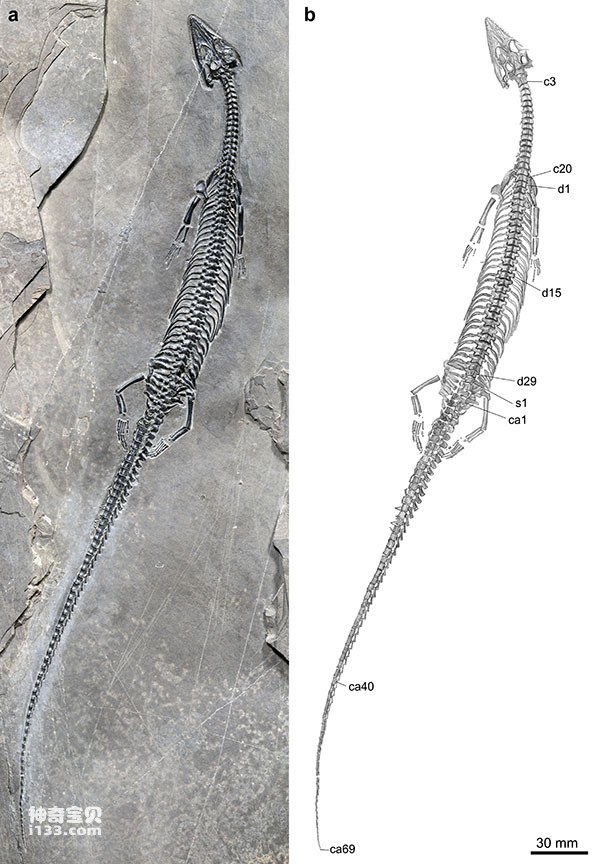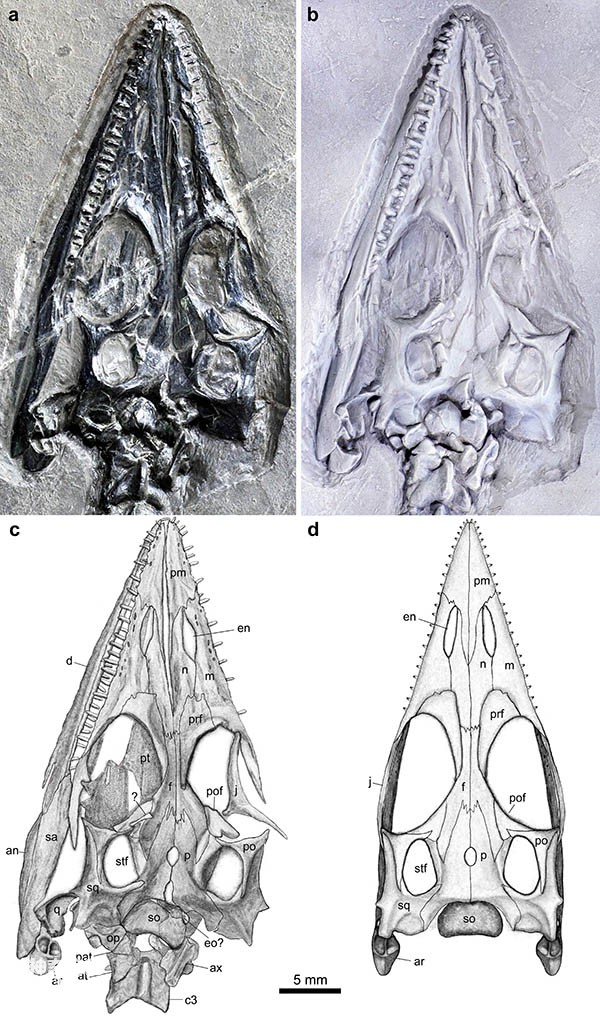Recently, the Chinese Academy of Sciences reported a new genus of marine reptiles about 244 million years ago, the long-tailed Red River Dragon. It was discovered in the early Middle Triassic marine strata of Luxi County, Honghe Prefecture, Yunnan Province, my country. It is 47 centimeters in length and looks like an aquatic lizard. Its extra-long tail is particularly special. The long-tailed Red River Dragon is the earliest definite evidence of the Pachycostosauridae in my country. It represents the Pachycostosaur with the longest tail (composed of 69 vertebrae) and the largest total number of vertebrae (121) in the world.
The study found that Honghesaurus represents the transitional type between Wumengsaurus and Qianxisaurus, providing new fossil evidence for solving the phylogenetic relationship and biogeographic evolution within the family Pachyplethosauridae. Judging from its long trunk and slender fore and hind limbs, Red River Dragon mainly used lateral waves to move forward in shallow sea environments, and its extra-long tail could further improve the efficiency of lateral waves.
As early as 1854, the fossils of Pachyplethosaurus were discovered in the Middle Triassic marine strata of the European Alps. These European cystosaurs are divided into five genera, all classified into the family cystosaurids. The earliest named marine reptile in China was a swollen-ribbed dragon called Guizhouosaurus Hu's. Hu's Guizhousaurus was originally classified into the family Swellosauridae, but later, taking into account the differences with similar European fossils, it was classified into the superfamily Guizhousauridae. The newly discovered Honghesaurus is 4 million years older than Guizhouosaurus and is closer to the European swollen ribs, representing the oldest fossil evidence of the swollen ribs in my country.
After the mass extinction at the end of the Permian, the marine ecosystem underwent major changes in the Triassic. Reptiles radiated and evolved in the marine environment, forming ichthyosaurs, sea dragons, and pterosaurs (including cynodonts, A branch of marine reptiles represented by swollen ribs, phantomsaurs and plesiosaurs). The Triassic marine strata in South China are widely distributed and preserve a large number of marine reptile fossils with rich categories, providing good conditions for studying the composition, food web and trophic levels of the marine ecosystem at that time.

Figure 1. Type specimen and sketch of Long-tailed Red River Dragon

Figure 2. Skull and restoration of Long-tailed Red River Dragon

Figure 3. Parts of the front and rear limbs of Long-tailed Red River Dragon

Figure 4. Phylogenetic relationship diagram of pterosaurs
animal tags:
We created this article in conjunction with AI technology, then made sure it was fact-checked and edited by a Animals Top editor.